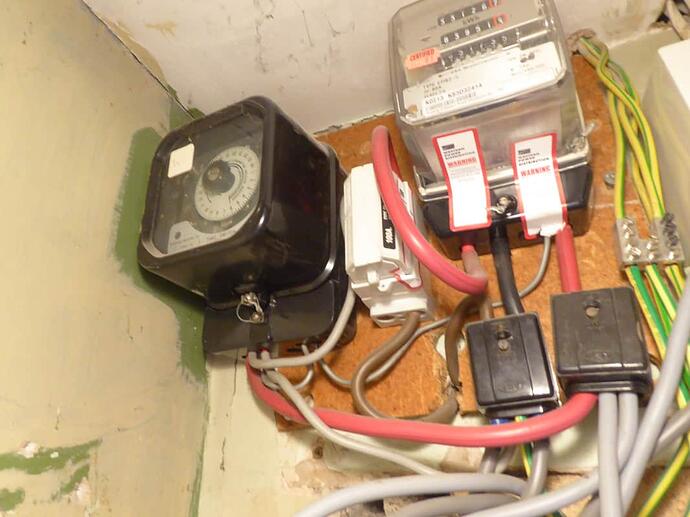My son-in law has mental health issues, but he found that wood turning helped calm his mind. It also turns out (pun intended) that he is very good at it.
Unfortunately, part of his lathe suffered damage and was put out of action as a result.
Yesterday my son brought me the damaged part to see if it could be repaired. More importantly, my son-in law came as well. This was a breakthrough as it was the first time he has been outside his home in two years. Because of this, it was immediately apparent how important it was to get his lathe working again.
This is the damaged part. The tool rest is T-shaped and looks a bit like a car windscreen scraper. It has a spigot that fits in this hole.
It’s locked in place by a handle that screws into this threaded hole, but unfortunately the thread had stripped. It was a cheap lathe, and the metal quality is not very good. This damage means that the tool rest could move causing the tool/chisel to grab or be thrown out which could cause serious injury.
It needs a new locking handle, and to do this it needs a bigger hole with a new thread cut in the body of the tool rest holder. I wonder if there is something in my junk-box that will do.
My “O” Level in Metalwork taught me that the softer the material, the coarser the thread should be. This old coach bolt and nut affair with a 3/8ths Whitworth thread (16 Threads Per Inch) should do nicely.
I broke out my trusty thread cutting kit, bought nearly fifty years ago for £3.25. I know, they saw me coming.
Next I drilled the old hole out to the new tapping size, liberally applied cutting compound, then tapped a 3/8ths Whitworth thread into the workpiece.
A perfect fit. Note that the bolt is not square to the job because the original hole was not drilled square. I told you it was a cheap lathe.
Now I needed to bend the bolt to make a handle. This one I think, belonging originally to my Uncle/FiL.
Using the nut assembly to protect the thread, I heated the bolt to soften it,
… then, still using the nut to protect the thread, I gave it a good (calibrated) whacking.
More important than having the correct tools for the job is having the correct PPE.
The mushroom head on the bolt would be uncomfortable, so I did a bit of cosmetic surgery upon it to give it a more ergonomic feel.
Another thing I learned in the forge at school was something called oil-bluing, to give a degree of corrosion protection.
First, heat the workpiece up until it is cherry red,
… then quench it in oil. (Sorry about the shaky camera shot, but you try shifting a piece of red hot iron one handed and operating a camera at the same time with the other hand!)
All done, with a nicely rounded end.
I’ll take it back to my son-in-law at the weekend.
As an aside, does anyone recognise what my temporary heatshield is made from? Millions of these were made and fitted to millions of homes. My house was built in 1960, and still has one in place.

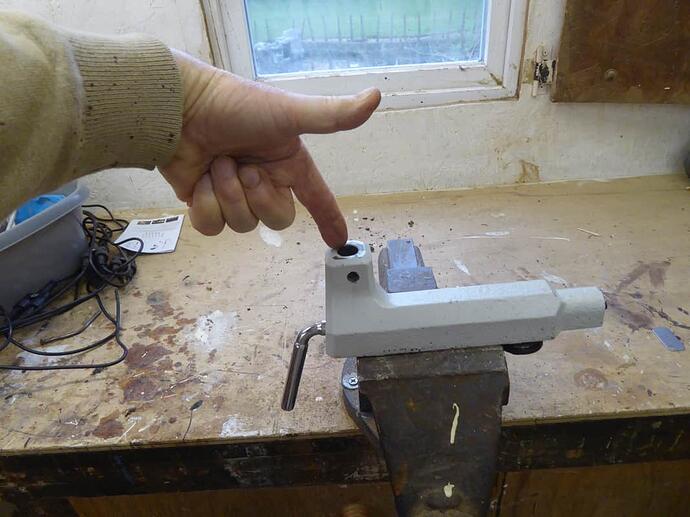
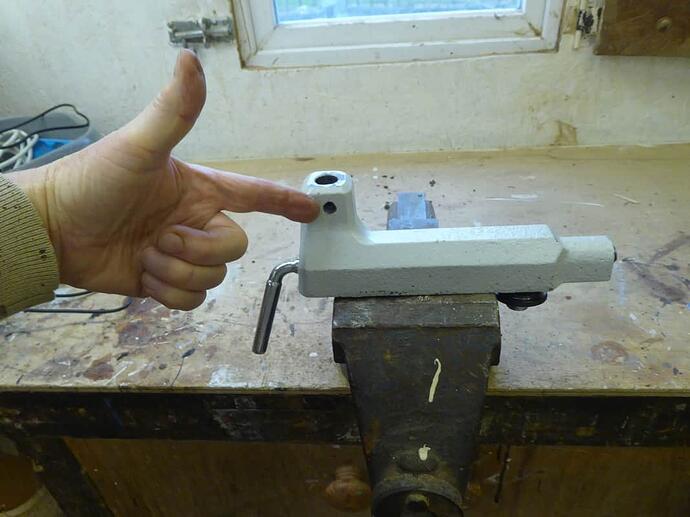
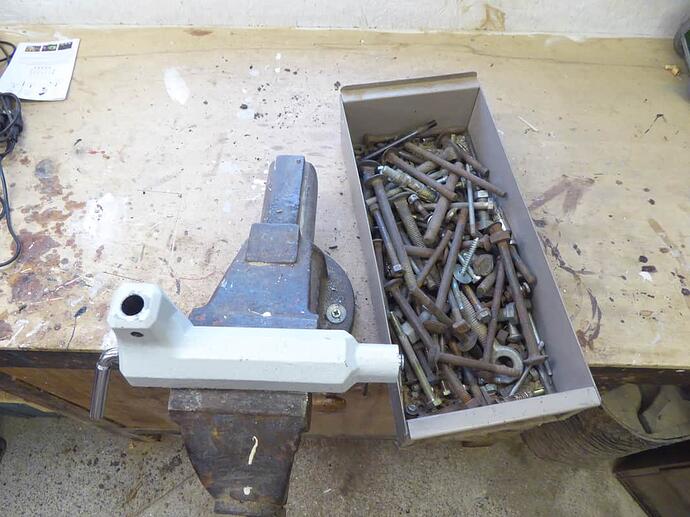
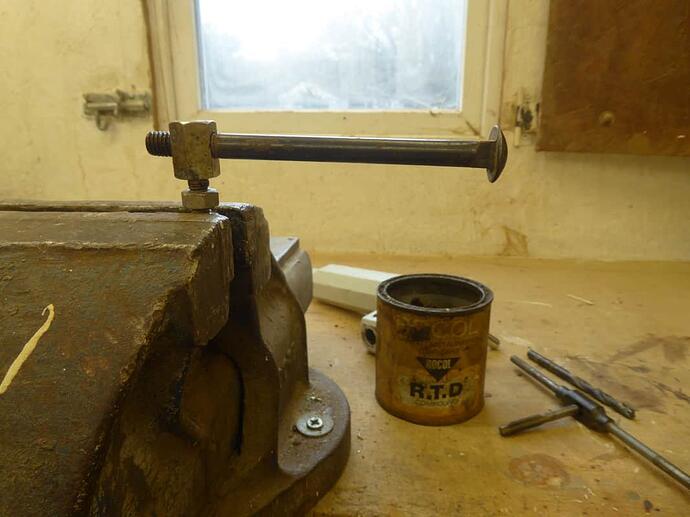
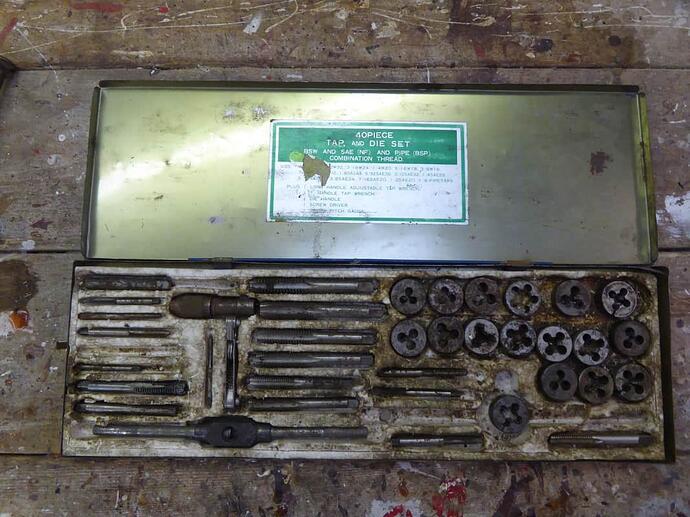
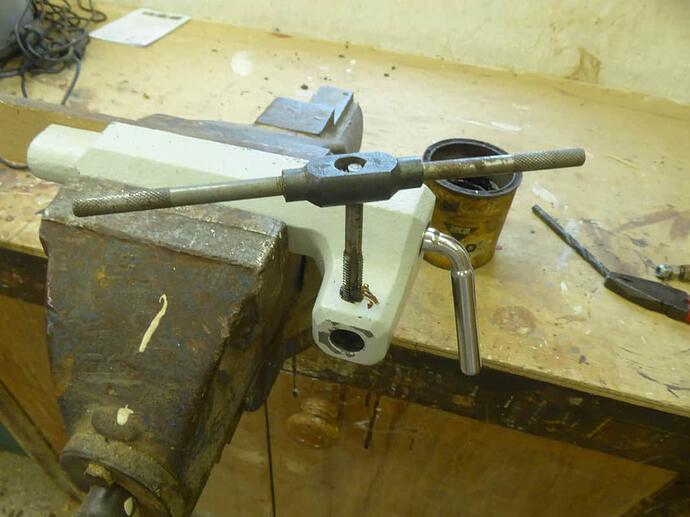
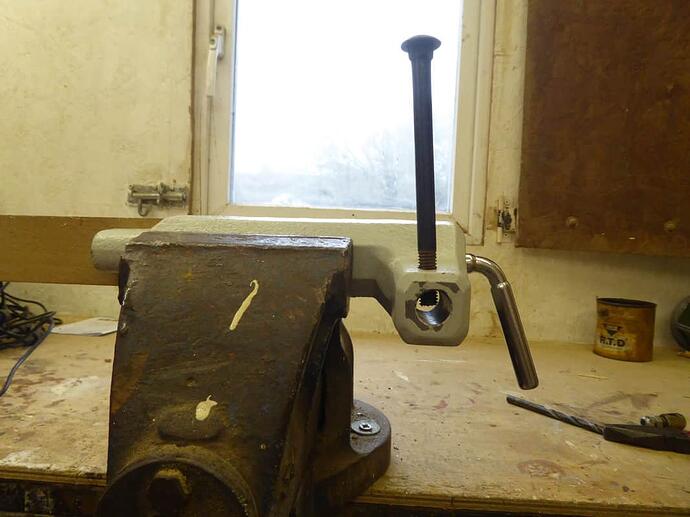

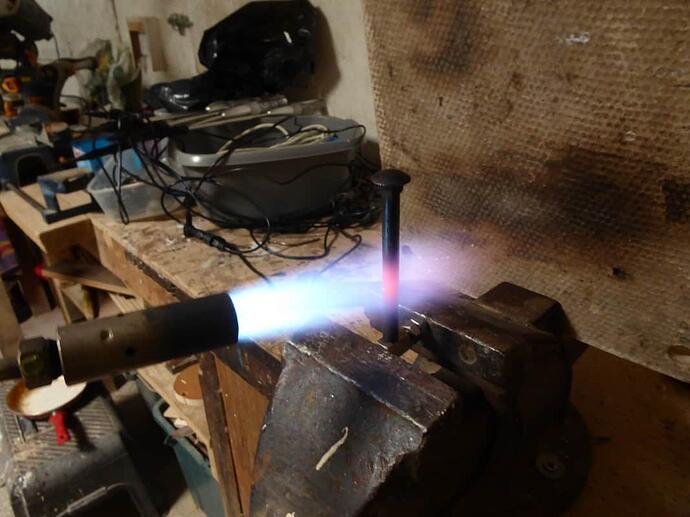
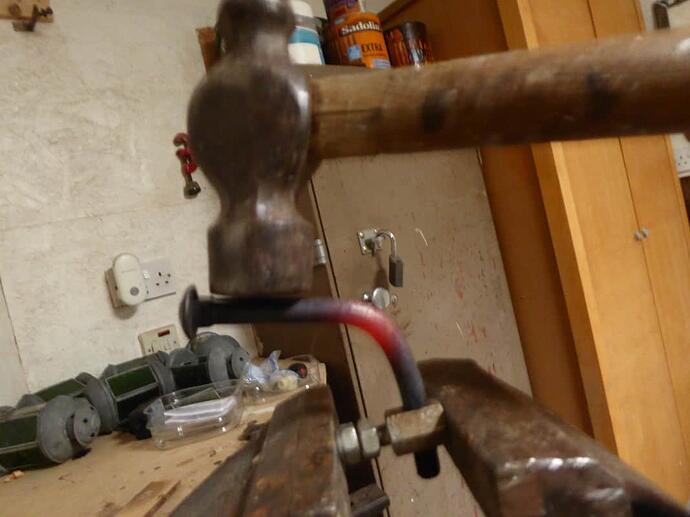

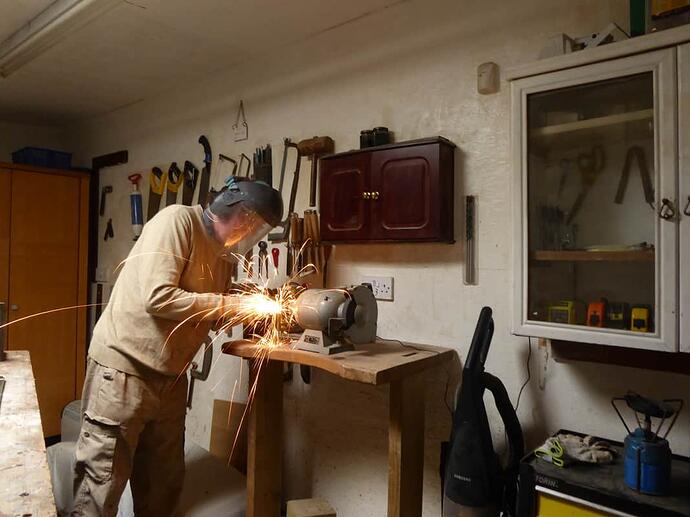
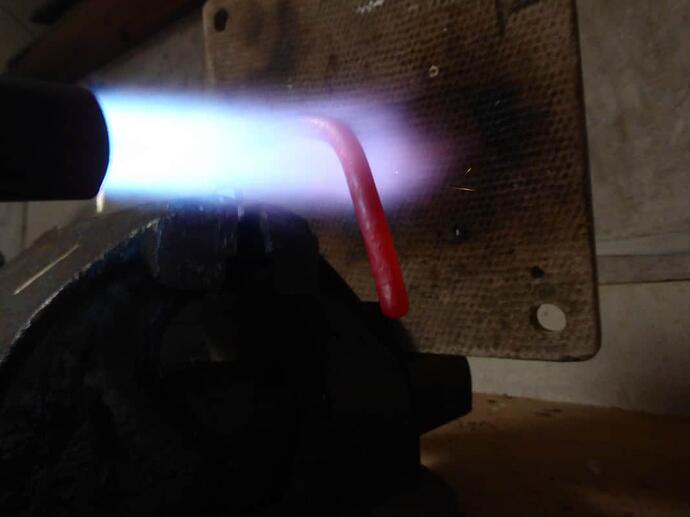

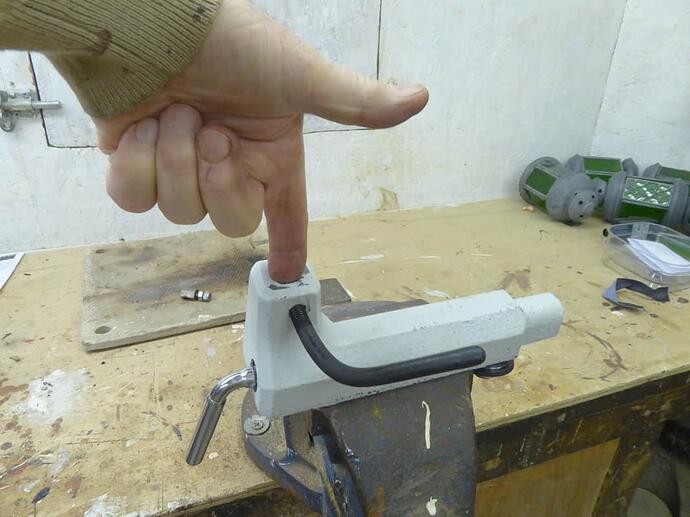


 And no, I don’t know what your heat shield was made with…?
And no, I don’t know what your heat shield was made with…?